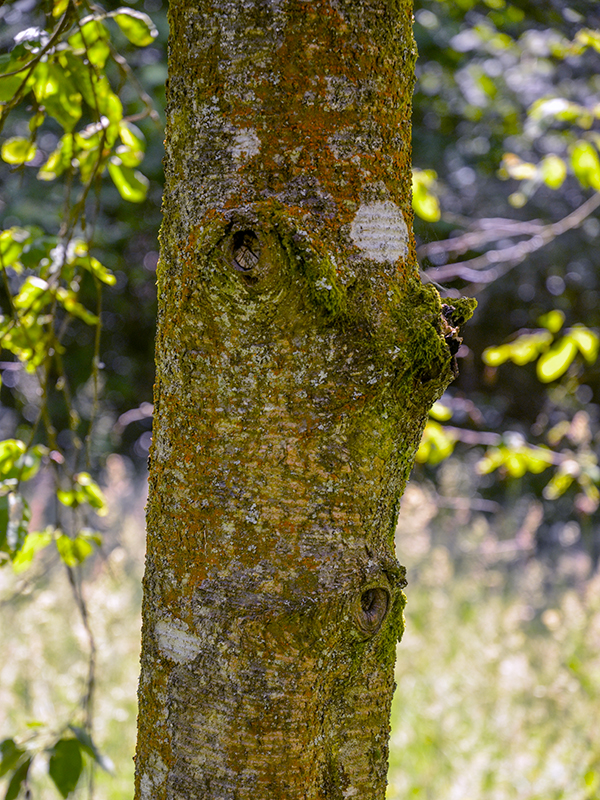
Woody > Betula > Betula lenta > Betula lenta
Betula lenta
Sweet Birch
Origin: Maine to Alabama, West to Ohio and north into southern Ontario. Introduced into cultivation in 1759.
Mike's
Opinion


"
This plant is extremly rare in Ontario and is considered critically endangered with only a few trees occuring in one known, isolated location in the province. A great tree to plant on its own and doesn’t need a large space as it grows to be about 12 m in diameter (crown) over a course of 50 years.
Michael Pascoe, NDP., ODH., CLT., MSc. (Plant Conservation)
"
| Family |
| Betulaceae |
| Genus |
| Betula |
| Species |
| lenta |
| Category |
| Woody |
| Type |
| Tree (deciduous) |
| Pronunciation |
| USDA Hardiness Zone |
| 3 |
| Canadian Hardiness Zone |
| 1a |
| RHS Hardiness Zone |
| H7 |
| Temperature (°C) |
| -40 |
| Temperature (°F) |
| -40 |
| Height |
| 13-20 m |
| Spread |
| 11-13 m |
Photographs
Description and Growing Information
Flowering Period
| General Description |
| A seldom grown birch because its bark is too dark to suit the taste of most people and the tree suffers in urbanized settings. Equally tall as broad, with small leaves and a red tint to a brown bark. It has been placed on the IUCN Red List as least concern. |
| Landscape |
| Makes an excellent tree for naturalized areas and parks. |
| Cultivation |
| Reaches its best development in deep, rich, moist, slightly acid and well-drained soils; however, is often found on rocky, drier sites. |
| Shape |
| Broadly pyramidal with a rounded crown when mature. |
| Growth |
| Medium |
| ID Characteristic |
| Lustrous dark green leaves and dark gray bark which breaks into large, thin, irregular scaly plates. Red tint in the brown bark means it’s a cherry birch. |
| Pests |
| Leaf spots, leaf blisters, leaf rust, aphids, canker, dieback, wood-decay and mildew. |
| Habitat |
| Very acidic, damp soil, but can tolerate dry soils. Betula lenta grows up to 23 m (crown diameter) at the foot of the Appalachian Mountains. |
| Bark/Stem Description |
| Stem is slender, light reddish brown, glabrous, shiny and contains a strong wintergeen flavour when chewed or smelled. Becomes almost black at full maturity with horizontal lenticles. |
| Flower/Leaf Bud Description |
| Imbricate, conical, sharp-pointed, reddish brown, divergent and terminal. |
| Leaf Description |
| Leaves are ovate-oblong and are 6-16 cm long. Leaves contain 10-13 vein pairs and are glossy dark green and glabrous above, paler beneath and hairy on the veins. |
| Flower Description |
| Monoecious, 5-10 cm long, formed during summer and autumn the year before flowering. New buds are formed on new growth but don’t flower until the following year. The pistillate flowers are enclosed in the bud and are borne upright, while the male ca |
| Fruit Description |
| Small winged nutlet, 2-4.5 cm long. |
| Colour Description |
| Leaves are a lustrous dark green in summer which change to a golden yellow in autumn. Bark is glistening reddish brown to almost black on young trees and on mature trees it grows into a brownish black colour. |
| Texture Description |
| Medium texture. |
| Notable Specimens |
| Westonbirt, The National Arboretum, Tetbury, Gloucestershire, England. |
| Propagation |
| Birch seeds have low viability, but produce numerous nutlets; 1-2 million seeds per kg. Never plant the seed too deeply, as it needs to be moist, and germination occurs by exposure to light. Collect the seeds from the tree while the catkins are still green. |
| Ethnobotanical Uses (Disclaimer) |
| Native Americans used medicinally to treat colds, fevers, diarrhea, pains and dysentery. |
